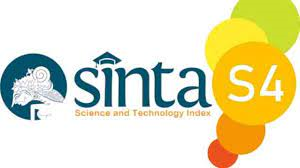The perception of emotions in L1 and L2 among Arabic-English bilinguals: A qualitative investigation
DOI:
https://doi.org/10.30957/ijoltl.v9i1.766Keywords:
emotions, bilingualism, first langugage, second languageAbstract
Emotions in the context of bilingualism present a complex and dynamic field of study (Dewaele, 2014). The current research examines the emotional experiences of ten Jordanian international Ph.D. students in Hungary, who are proficient in English as their second language (L2). Participants, contacted through social media, represent a diverse group of both genders, aged between 25 and 28. The study follows a qualitative research design. Semi-structured interviews were conducted to delve into the participants' emotional perceptions and expressions. By conducting open-ended interviews, the research aims to gain profound insights into how bilingual individuals experience and articulate emotions in their daily lives. The findings contribute to the broader exploration of the emotional dynamics experienced by bilingual individuals, highlighting the significance of personal and cultural factors in shaping emotional experiences. This research holds relevance not only for academics and researchers in the field of bilingualism but also for educators, counselors, and policymakers, as it provides a deeper understanding of the emotional aspects of language use in multicultural and multilingual contexts. Additionally, the study adds a valuable perspective to the existing body of knowledge on bilingualism and emotions, ultimately enriching our comprehension of this intricate phenomenon.
Downloads
References
References:
Anooshian, L. J., & Hertel, P. T. (1994). Emotionality in free recall: Language specificity in bilingual memory. Cognition & Emotion, 8(6), 503-514. DOI: https://doi.org/10.1080/02699939408408956
Altarriba, J. (2008). Expressions of emotion as mediated by context. Bilingualism, 11(2), 165. DOI: https://doi.org/10.1017/S1366728908003295
Ayçiçegˇi, A., & Harris, C. (2004). Brief report Bilinguals' recall and recognition of emotion words. Cognition and emotion, 18(7), 977-987. DOI: https://doi.org/10.1080/02699930341000301
Bond, Michael and Tat-Ming Lai (1986). Embarrassment and code-switching into a
second language. The Journal of Social Psychology 126 (2), 179_186.
Colbeck, K. L., & Bowers, J. S. (2012). Blinded by taboo words in L1 but not L2. Emotion, 12(2), 217. DOI: https://doi.org/10.1037/a0026387
Crystal, D. (2004). The Cambridge encyclopedia of the English language. Ernst Klett Sprachen.
Dewaele, J. M. (2004). Blistering barnacles! What language do multilinguals swear in?. DOI: https://doi.org/10.1558/sols.v5i1.83
Dewaele, J. M. (2004b). The emotional force of swearwords and taboo words in the speech of multilinguals. Journal of multilingual and multicultural development, 25(2-3), 204-222. DOI: https://doi.org/10.1080/01434630408666529
Dweaele, J. M. (2005). Investigating the psychological and emotional dimensions in instructed language learning: Obstacles and possibilities. The Modern Language Journal, 89(3), 367-380. DOI: https://doi.org/10.1111/j.1540-4781.2005.00311.x
Dewaele, J. (2010). Emotions in multiple languages. Springer. DOI: https://doi.org/10.1057/9780230289505
Dewaele, J. M. (2008). The emotional weight of I love you in multilinguals’ languages. Journal of Pragmatics, 40(10), 1753-1780. DOI: https://doi.org/10.1016/j.pragma.2008.03.002
Dewaele, J. M. (2011). Reflections on the emotional and psychological aspects of foreign language learning and use. Anglistik: International Journal of English Studies, 22(1), 23-42.
Dewaele, J. M., & Li, C. (2020). Emotions in second language acquisition: A critical review and research agenda. Foreign Language World, 196(1), 34-49.
Drescher, M. (2000). Eh tabarnouchel c'était bon. Pour une approche communicative des jurons en français québécois. Cahiers de praxématique (Montpellier), (34), 16-17.
Ferré, P., GarcÃa, T., Fraga, I., Sánchez-Casas, R., & Molero, M. (2010). Memory for emotional words in bilinguals: Do words have the same emotional intensity in the first and in the second language? Cognition and Emotion, 24(5), 760-785. DOI: https://doi.org/10.1080/02699930902985779
Grosjean, F. (2008). Studying Bilinguals. Oxford: Oxford University Press. DOI: https://doi.org/10.1093/oso/9780199281282.001.0001
Guttfreund, D. G. (1990). Effects of language usage on the emotional experience of Spanish-English and English-Spanish bilinguals. Journal of Consulting and Clinical Psychology, 58(5), 604. DOI: https://doi.org/10.1037//0022-006X.58.5.604
Harbsmeier, C. (2004). as a psychological term. Nù, Äi, jù 11, à i, wù, yù e do not have recognised antecedents in oracle bone inscriptions. Love and Emotions in Traditional Chinese Literature, 63, 69. DOI: https://doi.org/10.1163/9789047412311_005
Harris, C. L., Gleason, J. B., & Ayçiçeki, A. (2006). When is a first language more emotional? Psychophysiological evidence from bilingual speakers. In A. Pavlenko (Ed.), Bilingual minds: Emotional experience, expression, and representation (pp. 257–283). Clevedon, England: Multilingual DOI: https://doi.org/10.21832/9781853598746-012
Matters.
Haryanto, H. (2020). Enhancing English Learning Achievement through Problem-Based Learning: An Action Research at SMAN 1 Jepara. IJOTL-TL: Indonesian Journal of Language Teaching and Linguistics, 5(2), 81-94. https://doi.org/10.30957/ijoltl.v5i2.620
King, S. (2011). They were born with two tongues: Bilingual Asian American emotional disclosure of personal memories. Adelphi University, The Institute of Advanced Psychological Studies.
Li, C. (2018). A positive psychology perspective on Chinese students’ emotional intelligence, classroom emotions, and EFL learning achievement. Unpublished PhD dissertation, Xiamen University, China.
Liebkind, K. (1995). Bilingual identity. European education, 27(3), 80-87. DOI: https://doi.org/10.2753/EUE1056-4934270380
Marcos, L. R. (1976). Bilinguals in psychotherapy: Language as an emotional barrier. American journal of Psychotherapy, 30(4), 552-560. DOI: https://doi.org/10.1176/appi.psychotherapy.1976.30.4.552
Marian, V., & Kaushanskaya, M. (2008). Words, feelings, and bilingualism: Cross-linguistic differences in emotionality of autobiographical memories. The mental lexicon, 3(1), 72-91. DOI: https://doi.org/10.1075/ml.3.1.06mar
Pavlenko, A. (2005). Bilingualism and Thought. Oxford University Press.
Pavlenko, A. (Ed.). (2006). Bilingual minds: Emotional experience, expression, and representation. Multilingual Matters. DOI: https://doi.org/10.21832/9781853598746
Pavlenko, A. (2008). Emotion and emotion-laden words in the bilingual lexicon. Bilingualism, 11(2), 147. DOI: https://doi.org/10.1017/S1366728908003283
Rayson, P., Leech, G. N., & Hodges, M. (1997). Social differentiation in the use of English vocabulary: some analyses of the conversational component of the British National Corpus. International Journal of Corpus Linguistics, 2(1), 133-152. DOI: https://doi.org/10.1075/ijcl.2.1.07ray
Schrauf, R. W. (2000). Bilingual autobiographical memory: Experimental studies and clinicalcases. Culture & Psychology, 6, 387–417. DOI: https://doi.org/10.1177/1354067X0064001
Stenström, A. B. (1995). Taboos in teenage talk. Stockholm studies in English, 85, 71-79.
Stenström, AB (1999). From slang to slang speech. What is slang? , 89.
Wierzbicka, A. (2004): Preface: Bilingual lives, bilingual experience. Journal of Multilingual and Multicultural Development, 25(2-3), 94-104 DOI: https://doi.org/10.1080/01434630408666523
Downloads
Published
How to Cite
Issue
Section
License
Authors who publish with this journal agree to the following terms:
- Authors retain copyright and grant the journal right of first publication with the work simultaneously licensed under a Creative Commons Attribution-ShareAlike 4.0 International License that allows others to share the work with an acknowledgement of the work's authorship and initial publication in this journal.
- Authors are able to enter into separate, additional contractual arrangements for the non-exclusive distribution of the journal's published version of the work (e.g., post it to an institutional repository or publish it in a book), with an acknowledgement of its initial publication in this journal.
- Authors are permitted and encouraged to post their work online (e.g., in institutional repositories or on their website) prior to and during the submission process, as it can lead to productive exchanges, as well as earlier and greater citation of published work (See The Effect of Open Access).












